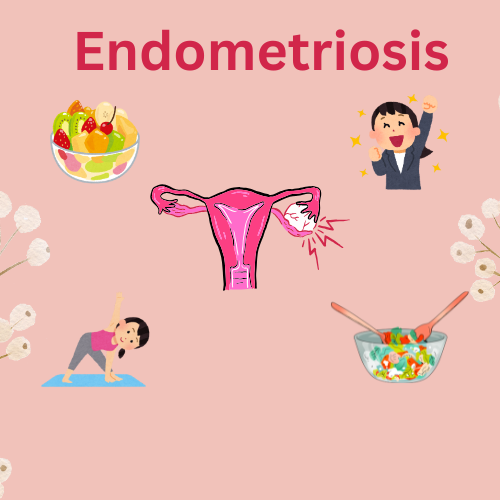Endometriosis is a painful and often misunderstood health condition that affects millions of women worldwide. Despite being common, it often goes undiagnosed for years, leading to severe discomfort and complications. In this article, we’ll break down what Endometriosis is, its causes, symptoms, diagnosis, treatment options, and ways to manage it effectively.
What Is Endometriosis?
Endometriosis is a condition where tissue similar to the lining inside the uterus (called the endometrium) grows outside the uterus. This tissue can attach itself to other organs in the pelvic region, such as the ovaries, fallopian tubes, and the outer surface of the uterus or bladder. Unlike the regular uterine lining that sheds during menstruation, this misplaced tissue has no way to exit the body, leading to inflammation, pain, and sometimes scar tissue formation.
What Causes Endometriosis?
The exact cause of Endometriosis remains unclear, but several theories exist:
- Retrograde Menstruation: Some menstrual blood flows backward through the fallopian tubes into the pelvic cavity.
- Genetic Factors: A family history of Endometriosis may increase the risk.
- Immune System Disorders: A faulty immune system may fail to recognize and destroy endometrial-like tissue outside the uterus.
- Surgical Scars: Sometimes, endometrial cells attach to surgical incisions after surgeries like C-sections.
What Causes Endometriosis?
The exact cause of Endometriosis remains unclear, but several theories exist:
- Retrograde Menstruation: Some menstrual blood flows backward through the fallopian tubes into the pelvic cavity.
- Genetic Factors: A family history of Endometriosis may increase the risk.
- Immune System Disorders: A faulty immune system may fail to recognize and destroy endometrial-like tissue outside the uterus.
- Surgical Scars: Sometimes, endometrial cells attach to surgical incisions after surgeries like C-sections.
How Is Endometriosis Diagnosed?
Diagnosing Endometriosis can be challenging because its symptoms mimic other conditions like ovarian cysts or irritable bowel syndrome (IBS). Doctors may use:
- Pelvic exams to feel for cysts or scars.
- Ultrasound or MRI scans to detect cysts associated with Endometriosis.
- Laparoscopy (a minor surgical procedure) — the gold standard for a definitive diagnosis, allowing doctors to see and possibly remove the tissue.
Treatment Options for Endometriosis
While there’s no permanent cure for Endometriosis, treatments can help manage pain and improve fertility. Options include:
✅ Pain Relief: Over-the-counter painkillers like NSAIDs.
✅ Hormone Therapy: Birth control pills, GnRH agonists, or other medications that control hormone levels to reduce or eliminate periods.
✅ Surgery: Laparoscopic surgery to remove endometrial-like tissue.
✅ Fertility Treatment: If Endometriosis affects conception, assisted reproductive techniques like IVF may help.
Lifestyle Tips to Manage Endometriosis
In addition to medical treatments, lifestyle changes can make living with Endometriosis more manageable:
- Eat an anti-inflammatory diet: Include fruits, vegetables, whole grains, and omega-3 fatty acids.
- Exercise regularly: Gentle yoga, walking, or swimming may help reduce pain and stress.
- Manage stress: Practice mindfulness, meditation, or join a support group.
- Track your symptoms: Keeping a pain diary can help you and your doctor find patterns and adjust treatments.
When to See a Doctor
If you experience severe pelvic pain, heavy periods, or difficulty getting pregnant, don’t ignore it. Early diagnosis and treatment of Endometriosis can prevent complications and improve quality of life.
Final Thoughts
Endometriosis can significantly impact daily life, but with awareness, proper treatment, and support, it’s possible to manage the condition and live well. If you suspect you have Endometriosis, consult a healthcare provider for personalized advice and care.



